WhereToGoForMyHoliday.com
The best destination comparison site!
WhereToGoForMyHoliday.com
The best destination comparison site!
Naples or Porto, which is better for your holiday in 2024?
Porto and Naples both offer unique and enticing experiences, but which one should you choose for your city break or holiday?
We understand your dilemma. There is an abundance of travel guides for both cities, but few actually comparing them, and advising you which is the better for your trip.
This article will provide our unbiased and independent views of Porto and Naples, hopefully making your choice that little easier.
The article is structured into several sections, each of which can be directly accessed through the following links:
• Introduction to the cities
• Scores and ratings
• Which one should I, friends, or family visit?
• When to visit and weather
• Who is the city suited for?
• The perfect 48hours (with map)
• Tourism details (where to stay? airport details?)
Introduction to Naples and Porto
In many ways, Naples is split in two halves; a town of shadow and light.
There's the Naples of pizza dough and La Dolce Vita, which is all about kicking it by the azure Tyrrhenian Sea with good food and great wine.
Then there's the gritty city, whose reputation comes from the Camorra mafiosos and the ramshackle alleys around Spaccanapoli street. Both are immersive and interesting in their own right
Put simply, Naples is one of the most authentic and enthralling cities in Italy. The self-proclaimed capital of the south, it's got Roman history and gorgeous landscapes in equal measure.
It promises something for honeymooners, backpackers, foodies, and outdoorsy types, but won't sugar-coat the experience with anything special for tourists.

The Spaccanapoli cuts Naples in two and transitions from the old to modern sides of the city
Porto is the surprise of western Europe. This hardworking and unassuming city seems to have stumbled into tourism without even realising its own potential. The variety of historic sights, personable atmosphere, along with a glass of sweet Port wine, creates a wonderful tourist destination.
Porto may be comparatively small and virtually unknown, but it can rival any of the more established tourist destinations. The unique appeal of Porto is that it is not swamped by tourists in the summer season, and is ideal for a summertime city break.
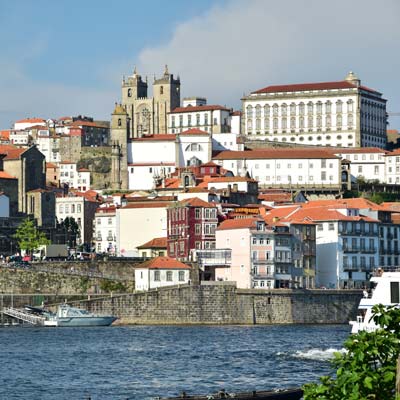
The Ribeira is the oldest district in Porto

The harbour front in Naples
Naples vs Porto: City Ratings
Summary
Where would I journey for a personal escape?
Porto
Where would I send my parents for a memorable visit?
Porto
Where's the ideal destination for my adventurous 19-year-old cousin?
Naples
Where should my food-obsessed friend indulge their culinary passions?
Naples
Note: The above comparisons are weather-independent and are based on travel during the most opportune times of the year. Details about the ideal travel seasons are elaborated upon later in this article.
In the sections that follow, you'll find a comprehensive comparison between these two fascinating cities. This includes recommendations on the duration of stay, the best times to visit, and tailored 48-hour itineraries for each city.
The final segment delves into practicalities for your travels, such as the best airport to fly into, the optimal districts for your accommodation, and insider tips, for when you come to explore the city.
We hope that you find all of this information useful, in planning your next exciting trip!
Destination details
How long to spend each city?
That's a tricky one. Naples itself can be seen from tip to toe in just a couple of days. We'd say around 48 hours is perfect for tasting Neapolitan pizzas in legendary L'Antica Pizzeria da Michele and feeling the vibes down lively Spaccanapoli – the main drag in the historic centre.
For a longer stay of five to seven days, there's a catch: A lot of Naples's main draws are outside of town. Think the likes of Pompeii, the soaring crater of Vesuvius, and the Amalfi Coast. To add those on, you'll need to plan to come here for considerably more time.
Porto is a compact city, and if rushed, all of the major tourist areas can be seen in a single day. Typically, we would recommend two days, which would include a short cruise along the Douro River and time for port tasting.
If you wished to extend your trip further, there are some great days out to the historic towns of Guimarães, Braga and Aveiro. During the summer (Jun-Sep) there are beautiful beaches along the Costa Verde coastline, and you could visit the resort towns of Espinho, Vila do Conde or Matosinhos.
Related articles: 2 days in Porto – 1 week in Porto

The obelisk of San Gennaro in the Piazza Riario Sforza
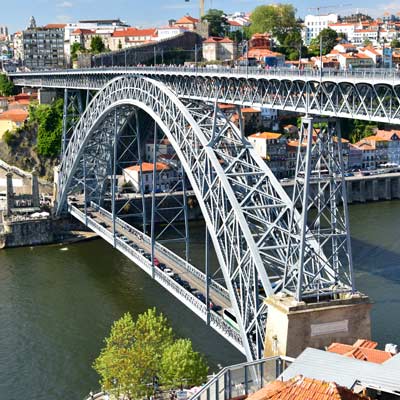
The Ponte Luís I bridge in Porto spans the Douro River
Porto is one of the best European cities for a summer city break. While the rest of southern Europe swelters under the unbearable summer heat, Porto experiences pleasant weather and is not completely overrun by tourists.
Winters are mild and wet, and there is a high chance of rain from October through to May. The middle of June is the best time to visit the city when the Santos Populares festivals are being held.
Spring is the best time of year in Naples. This southern city gets warm nice and early, so you can expect April highs in the 20s and even enough sun to hit the beaches of Gaiola and the local lidos if you want to take a dip in the Med. There are fewer other travellers about before the summer rush too, which means you'll find it more pleasant strolling the historic centre and Pompeii.
Of course, that's not to say the summer is bad in these parts. It most certainly isn't. Reliable warmth and loads of sunshine, topped off with a buzz about town, help make the months between June and August great options. Just be prepared to pay extra for hotels and flights, and don't expect the city to be quiet.
Naples is a raw and immersive Italian city. It's got pizza places that are frequented by locals. It's got wine bars serving gorgeous Campanian tipples. It's lived-in and gritty and real. That makes it perfect for city hoppers who like atmosphere and energy. And the joys don't end there…
Just around the Bay of Naples are two of the country's most impressive archaeological sites: Pompeii and Herculaneum. They'll entertain the history lovers, along with the likes of the Castel dell'Ovo and the vast Museo Archeologico Nazionale. Loved-up duos might also want to make Naples a pitstop on a couple's break to the impossibly gorgeous Amalfi Coast that lies to the south.
Naples isn't for those who like small, easy-going towns where there's lots of room. It's crammed between the volcanos and the sea, so things are compact in the centre. It can also be quite hectic, with touts and traffic.
The characteristics of Porto traditionally appealed to the older visitor; it is very safe and there is a pleasant unhurried ambience, with a slightly conservative attitude. This mature opinion of Porto is often compounded by the most popular activities; Douro River cruises and Port tasting (which is great fun!).
This demographic of visitors to Porto is rapidly evolving, as younger travellers realise it is actually a progressive city, with a lot to see and do. Porto will appeal to those looking for somewhere slightly different, but who want a hassle-free trip with decent tourist facilities. Being one of the safest cities in Europe makes it ideal for solo/female travellers.

The Piazza Plebiscito is the grand square of Naples
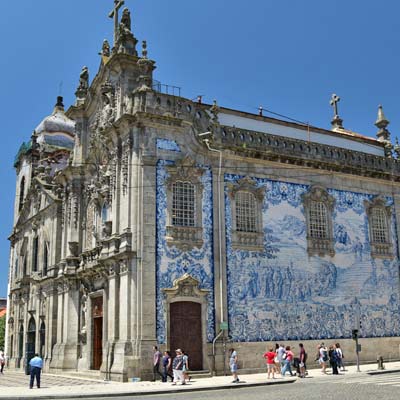
The beautiful Azulejo tile painting on the side of the Igreja do Carmo, Porto
Porto
Considering the size of Porto there is a lot to see, and you can pack in a lot in a 48 hour visit.
Below is an interactive map of where we recommend to go in 48 hours in Porto; day 1 is highlighted in green and day 2 in yellow, with optional sights marked in grey.
A tour of Porto typically starts in the Se district, with the gothic cathedral and ancient city walls. Next is the Baixa district, where you can find the Avenida dos Aliados, and enjoy the view from the top of the Clérigos Tower.
For the latter part of the day and evening visit the ancient Ribeira district, which lines the banks of the Douro River. For the evening, join one of the boat cruises along the river or to party head to the Vitória district.
On the morning of the second day, ride the traditional tram to the Foz district, which is positioned at the mouth of the Douro River and extends along a rocky coastline to the beach of Matosinhos.
In the afternoon, and the highlight of Porto, are the tours of the Port cellars and Port tasting. Lining the southern banks of the Douro River are eight of the major Port producers, each with their vast cellars and tasting tours. You’ll happily leave Porto a Port connoisseur and a little tipsy…
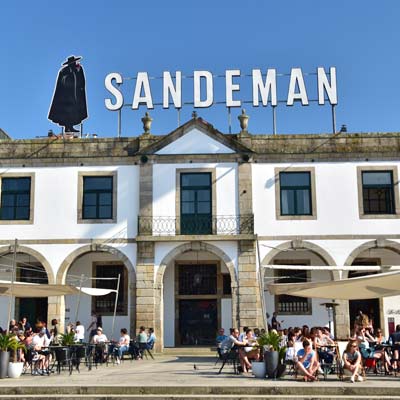
Port tasting at the Sandeman cellars– an enjoyable activity and a great way to meet fellow travellers
Everything from millennia-old villas to rich art collections is on offer in this 48-hour guide to Naples. Oh, and there are plenty of chances to devour pizza – it's considered the very best in Italy.
Day 1: Start in the Quartieri Spagnoli. Ramshackle and rough around the edges, it's the perfect combo of Neapolitan grit and charm. There's bound to be a cafeteria serving cannoli (crunchy Sicilian pastries) and cappuccino there that takes your fancy.
You'll need the energy, because your next destination is the acclaimed Naples National Archaeological Museum. It's known to have one of the largest collections of Roman artifacts anywhere in the world, but the standout highlight is surely the Alexander Mosaic, reconstructed from the floors of Pompeii's opulent House of the Faun.
Once you're done in there, head south to the sleepless street of Spaccanapoli. Literally meaning 'the street that divides Naples', it does exactly as that implies. It runs right through the heart of the city, with drooping washing lines, street-food vendors and age-old churches looming on both sides. It will take a while to walk its two kilometres but it's all about breathing in the urban energy. What's more, the iconic L'Antica Pizzeria da Michele sits at the eastern end.
You'll be rewarded there by one of the best pizzas in town – choose between marinara (just fresh tomato passata and garlic) and bufalina (with buffalo mozzarella). After lunch, make for the port area.
That's crowned by the turrets of the Castel Nuovo, a grand fortification that has a history of more than 800 years. Behind that comes vast Piazza del Plebiscito. Prepare to be stunned by its sheer size and grand horse statues. For evening, a few cocktails and some tasty homecooked pasta awaits in the osterias of stylish Chiaia district.

The Castel dell'Ovo (Egg castle) on the harbour front of Naples
Day 2: Rise early and get to the platforms of Naples Centrale station. That's where the trains depart for Pompeii in the morning. You might just have heard of that place – it was once an entire Roman resort town for the nobles and elite of the empire.
That is, until Mount Vesuvius suddenly erupted in 79 AD and flooded it with lava and ash. These days, the site is an amazing and haunting archaeological dig, with whole streets, entire villas, and even brothels complete with Roman wall art just waiting to be discovered.
It's likely Pompeii will take more than half of the day, while the most devoted history buffs can add on a trip to Herculaneum to boot. If not, head back to Naples city and go straight to the hilltops where the Castle of St Elmo keeps watch. That's the Vomero district, and it's famed for its sweeping panoramas of the Gulf of Naples and Mount Vesuvius. With that as the backdrop, find yourself a traditional trattoria or pizzeria and dine with a view of the metropolis to cap off the trip.

Pompeii was covered in 6m of volcanic ash when Mount Vesuvius erupted in AD 79

The elegant Galleria Umberto I shopping gallery in Naples
Capodichino Airport, or Naples Airport, is the main gateway to the city by air. It's the fifth largest in the country, so should have lots of low-cost and premium services jetting into its runways. There's a metro line to the terminal in the works, but for now arrivals will need to use the Alibus to Naples Centrale station. Tickets cost about €5 each way and the travel time is roughly 15 minutes outside of rush hours.
Centrale Station is a main stop on the north-south railway line through Italy. It's easy to get there on high-speed links from Rome and even Milan. That's one of the most glamourous ways to arrive in Campania, offering gorgeous views of the countryside before pulling right into the heart of the city.
When it comes to booking hotels in Naples, take some time to consider each neighbourhood one by one. Most travellers are drawn to the Historic Centre (or Centro Storico in local speak). That's the home of the Duomo and the buzzing lane of Spaccanapoli.
It's probably one of the pricier and more lively areas to stay. Alternatively, go to Vomero for boutique B&Bs with great views, not to mention proximity to some of the coolest hipster eateries and cafes. Or, choose the down-to-earth Quartieri Spagnoli, which is filled with hostels and guesthouses that shouldn't break the bank.

The view over Naples from the surrounding hills
Naples has a reputation for being Italy's roughest and most dangerous place.
It's true that crime rates are higher here than in the north. What's more, the mafia are still in action in these parts. You'll want to be a little more careful walking around areas like the Naples Centrale station and Quartieri Spagnoli.
Also try to stick to more touristy central districts, and don't walk alone at night. On top of that, be wary of street touts selling stolen goods, and be on the guard for pickpockets and drive-by thieves on scooters.
Porto is a recommended destination for an alternative city break. Porto has a single airport which is 12km north of the historic centre and is connected by the metro. Porto has fewer flight routes and departures than other major cities, which means demand for weekend flights can be high. Equally, during the low season, there are bargain flights to be found.
Accommodation tends to be good value with ample supply, and most tourists are based in the Vitória, Sé or Baixa districts (all on the north side of the river). Porto can be easily explored on foot and rarely any public transport or taxis are needed for the entire trip. Just beware, there are steep hills!
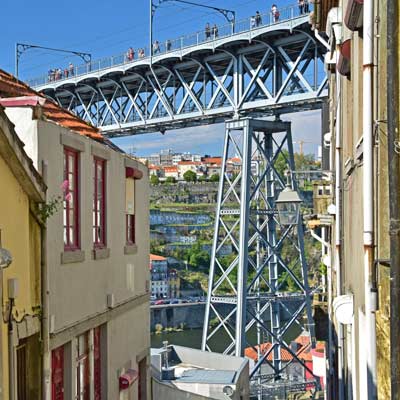
The pretty historic centre of Porto

oh we were stuck in the airport!

Copenhagen was a bit expensive...

All we did was drink beer in Brussels...

Muncih was crazy

And we got so burnt!

Remeber that night in Rome

oh we were stuck in the airport

So much fun kayaking

Berlin and that group from Austria!

There was such a view from that church

And we got so burnt!

Munich was eventful, wasn't it!

Such a view from that cathedral in Florence

Lisbon was such so much fun

Last summer was so much fun .... x

Remeber that night in Rome

Lisbon was such so much fun

Such a view from that cathedral in Florence

Munich was eventful, wasn't it!

And we got so burnt!

Remeber that night in Rome

All we did was drink beer in Brussels...

Berlin and that group from Austria!

Can't wait to go back to Dubrovnik

Remember that boat ride in Prague

Copenhagen was a bit expensive...








